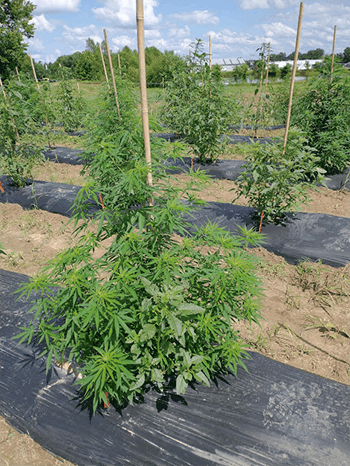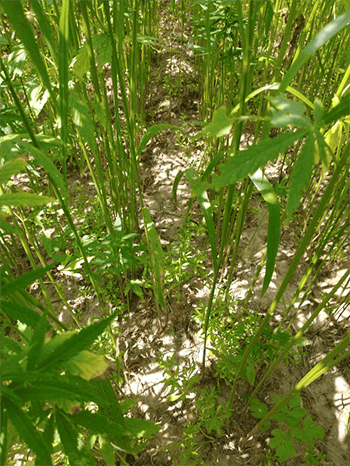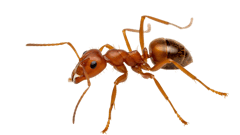 hemp southern illinois university
hemp southern illinois universityA research team at Southern Illinois University in Carbondale, Ill., recently harvested its 2020 hemp crop as part of ongoing study into the plant’s weed suppression properties and its potential as part of a rotation in that part of the country.
The team is led by Karla Gage, assistant professor of plant soil and agricultural systems and plant biology. This was the team’s second year cultivating a CBD-rich hemp crop. The team has also kept its finger on the pulse of fiber production research and grain variety trials (alongside the University of Kentucky and Cornell University).
“With the research program, I really wanted to start looking at hemp crops in rotation with corn and soybeans,” Gage said. “As a weed scientist, I’m thinking about new ways to diversify cropping systems so that we have new tools and new capabilities to control weeds in those environments. We know that crop rotations can be a critical component of this. The more crops you have in rotation, the fewer problems you have with weeds and pathogens. So, I really wanted to start doing research on hemp. I wanted to look at hemp as a fiber crop and also as a seed crop. That’s kind of where we're going, because I was thinking, right now with the current way that a CBD crop is cultivated, it's going to be really difficult to fit that into a rotational strategy with corn and soybeans.”
Gage’s team is operating under the research pilot program regime, but that will turn over to the state’s USDA-approved plan in December. That means that SIU and other research institutions in Illinois will be treated as growers in the eyes of the regulatory agency, subject to the same rigorous THC testing compliance as anyone else in the business. And, like every other licensed grower, this puts a new twist on hemp product moving forward.
 southern illinois
southern illinoisIndeed, the fall of 2020 is an auspicious time for SIU researchers. The university’s College of Agricultural, Life and Physical Sciences is advertising an assistant professor job for cannabis biology and cropping systems as part of its new cannabis science center. And, across the region, farmers are experimenting with the new crop as a way to diversify existing corn and soybean holdings.
So far, according to the SIU team, hemp has received mixed reviews from area farmers, if only because the humidity and rainfall swings make for a tough adjustment to the crop in southern Illinois.
Avery Shikanai, a graduate student working on this project and helping to lead the research component, said that the area around the university is very humid. It’s a part of the state that’s tucked into the confluence of the Ohio and Mississippi rivers. Dew remains on plants’ leaves for hours each morning around Carbondale, and the promise of a wet spring makes it difficult to establish a hemp crop.
 hemp weed suppression
hemp weed suppression“There are some issues with leaf spot diseases that happen,” he said. “We get a ton of growing-degree days. It’s really, really hot, relatively. I'm from northern Illinois. And so, that can be good for hemp growth, but variety selection is an issue. There are a lot of varieties that are adapted to more northern latitudes, and when you take them down here, they have trouble flowering at the time when we would want them to.”
The team is keeping an eye on climate change projections, which show an emphasis on those wet springs and dry summers—regional climate realities that any southern Illinois hemp farmer will need to recognize.
“The early season is so important,” Gage said.
There are many central questions guiding research at SIU and elsewhere right now. From the development of THC to the plant’s weed suppression properties, Shikanai said it’s an exciting time to be growing multiple varieties of hemp for different experiments.
“Some of it's anecdotal, but some of it is really promising,” he said. “We’ve seen that when you can get good stands of hemp to emerge—when you have uniform emergence and you don't have issues with damping off—we've seen that planting at high densities can be really effective in managing the weeds. We’ve found that, unsurprisingly in areas of the field where we had a lot of mortality and a lot of seedlings die, there's a lot of weeds. But if you look at areas where we were able to get that good establishment and rapid early growth, they were pretty successful at suppressing weeds.”
























